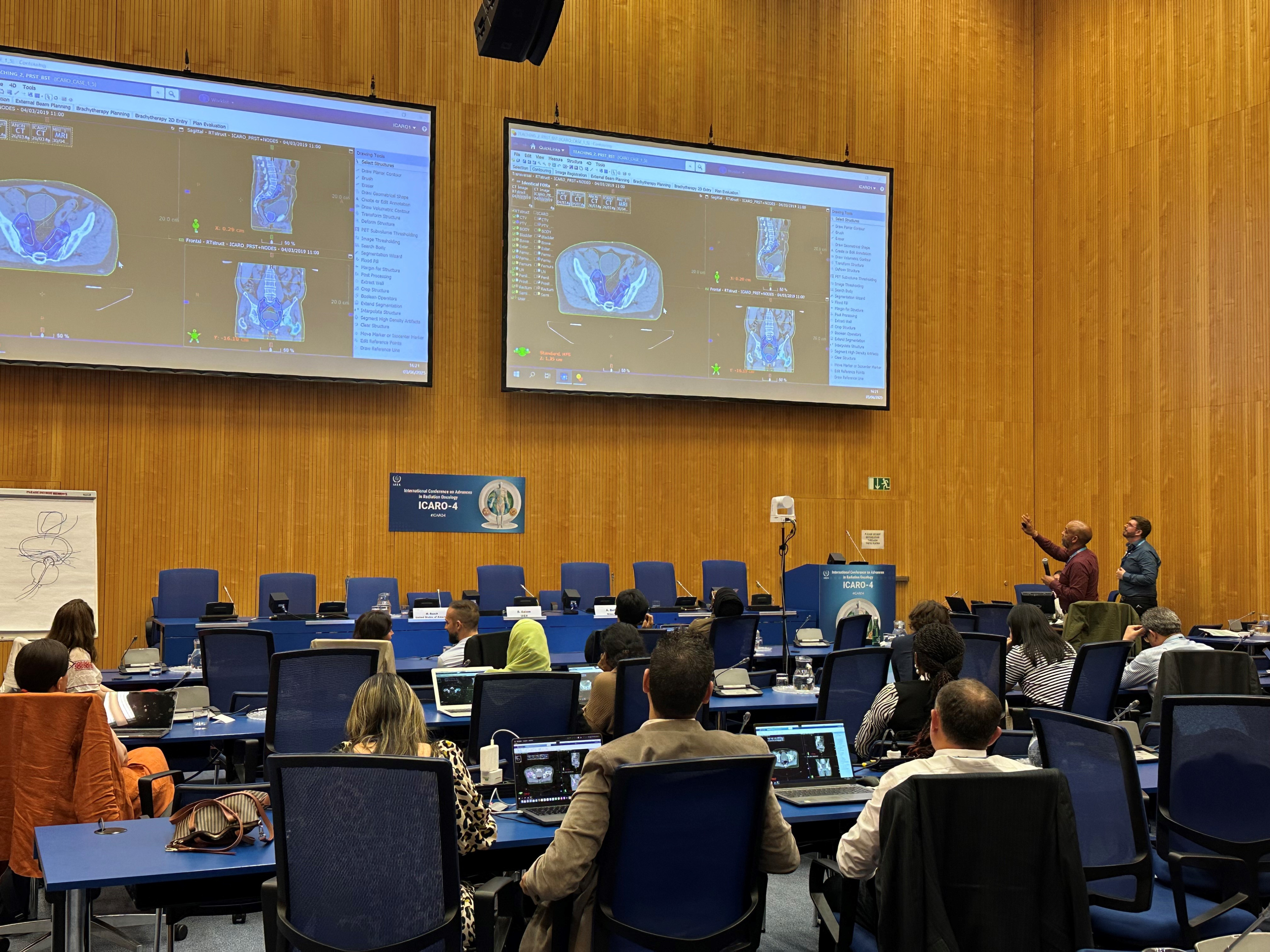The IAEA has launched a new two-year coordinated research project to explore how artificial intelligence can assist with contouring — a crucial step in cancer treatment, in which a tumour and the surrounding tissues are outlined to guide the delivery of radiation therapy. The project will delve into the challenges and limitations of implementing artificial intelligence-based tools within radiotherapy.
Despite major advances in radiation oncology in recent decades — from innovations in treatment equipment to advances in imaging modalities — there are still considerable variations in contouring practices. The specifications for these practices for gross tumour volume (the extent of a tumour that can be discerned through imaging techniques), clinical target volume (the tumour and surrounding tissues that may contain cancer cells) and organs-at-risk (nearby healthy tissues and organs) have evolved over time as international groups developed guidelines for the radiation oncology community.
“Missteps during contouring can significantly impact treatment outcomes — be it from missing the tumours or irradiating normal tissues unnecessarily,” noted Tomoaki Tamaki, Head of Applied Radiation Biology and Radiotherapy in the IAEA Division of Human Health. “Limitations in diagnostic imaging, difficulties in identifying the tumour accurately, and the increasing global cancer burden can all add to the contouring challenges clinicians face.”
Artificial intelligence (AI) tools such as deep learning-based algorithms can be valuable as previous studies have shown a reduction in contouring time and variation. Furthermore, explainable AI (XAI) can help by enabling cancer care providers to understand the contouring decisions and predictions made by AI models.
This new coordinated research project (CRP) builds on a previous project, which concluded in 2024 and focused on the usefulness of AI tools in identifying organs-at-risk — a task which involves the recognition of normal anatomical structures and adjustments for any individual variations. Now, the IAEA is leveraging both AI and XAI to improve the precision and efficiency of contouring tasks while also investigating the risk of bias being introduced by these technologies.
The new CRP will examine how AI can assist with identifying gross tumour volumes. This recognition of both abnormal tissue and how much of its surroundings have been invaded is more challenging, since it requires a higher level of medical understanding and judgement.
